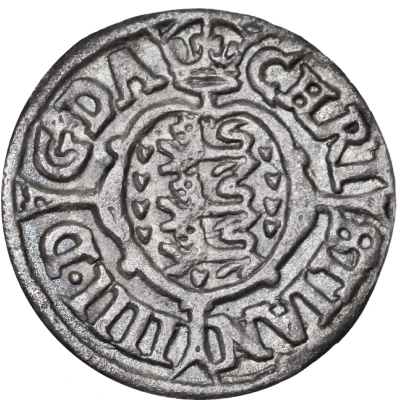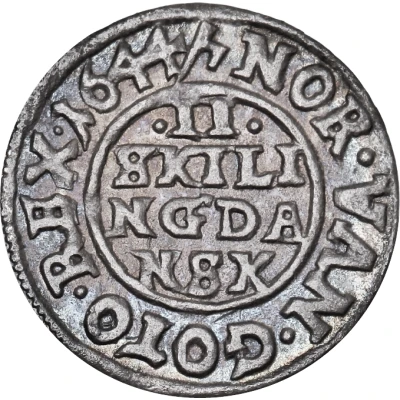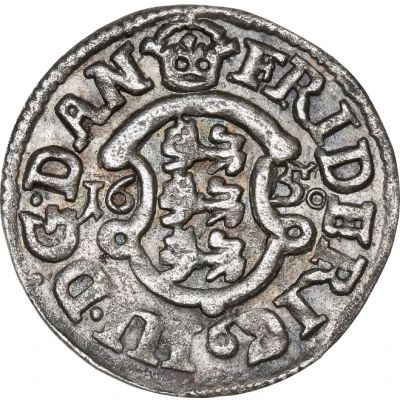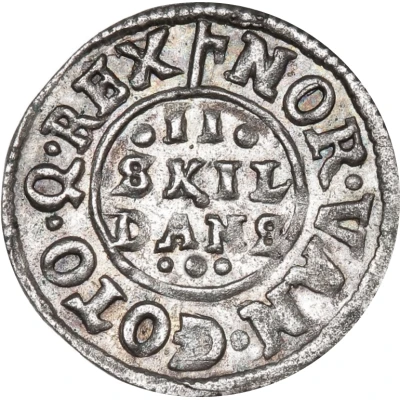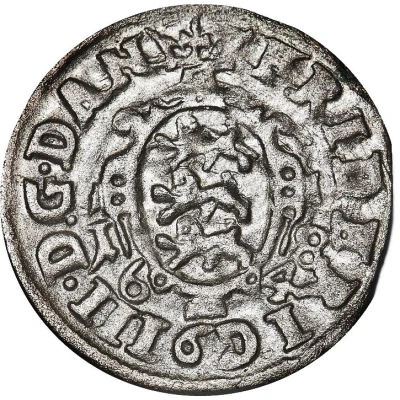
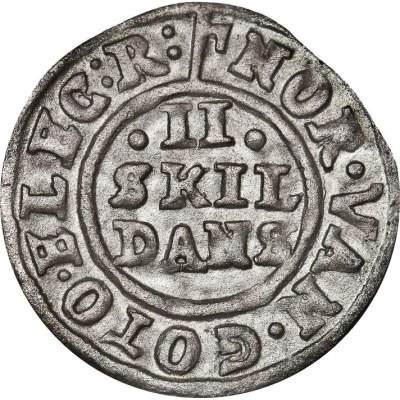

© Bruun Rasmussen Kunstauktioner
2 Skilling Dansk - Frederik III Rex Electus
| Billon (.281 silver) | 1.192 g | 17.62 mm |
| Issuer | Denmark |
|---|---|
| King | Frederick III (Frederik III) (1648-1670) |
| Type | Standard circulation coin |
| Years | 1648-1649 |
| Value | 2 Skilling (1⁄48) |
| Currency | Rigsdaler specie (1625-1813) |
| Composition | Billon (.281 silver) |
| Weight | 1.192 g |
| Diameter | 17.62 mm |
| Shape | Round |
| Orientation | Coin alignment ↑↓ |
| Demonetized | Yes |
| Updated | 2024-10-04 |
| Numista | N#143382 |
|---|---|
| Rarity index | 86% |
Reverse
Value in letters on three lines within circle. Legend outside, with halberd mintmark at end.
Script: Latin
Lettering:
.II.
SKIL
DANS
NOR. VAN. GOTO. ELEC: REX:
Translation: Elected King of Norway, the Wends and the Goths
Comment
Type 1A: Oval shield with convex notches in center at sides and knobs in upper side and in the middle of lower side. Date divided in central position, right where are the convex notches.Type 1B: Oval shield with convex notches in center at sides and no knobs. Date divided in central position, right where are the convex notches.
Type 1C: Oval shield with convex notches in center at sides and knobs only where the notches begins. Date divided in central position, right where are the convex notches.
Type 2: Oval shield with complex ornaments. Date divided vertically at sides of lower half of shield.
Type 3: Shield like type 2; date at end of obverse legend.
Interesting fact
One interesting fact about the 2 Skilling Dansk coin from Denmark is that it features an image of King Frederik III (Rex Electus) on one side, while the other side bears the coat of arms of Denmark. This coin was minted during a time of great change in Denmark, as the country was transitioning from an elective monarchy to an absolute monarchy. The coin's design reflects this shift in power, as the image of the king on the obverse (front) side symbolizes the increasing authority of the monarch. Additionally, the use of Billon, a silver-copper alloy, in the coin's minting process was a common practice during this time period, as it allowed for the creation of coins with a silver content that was lower than the standard 90% silver content found in many other coins.
